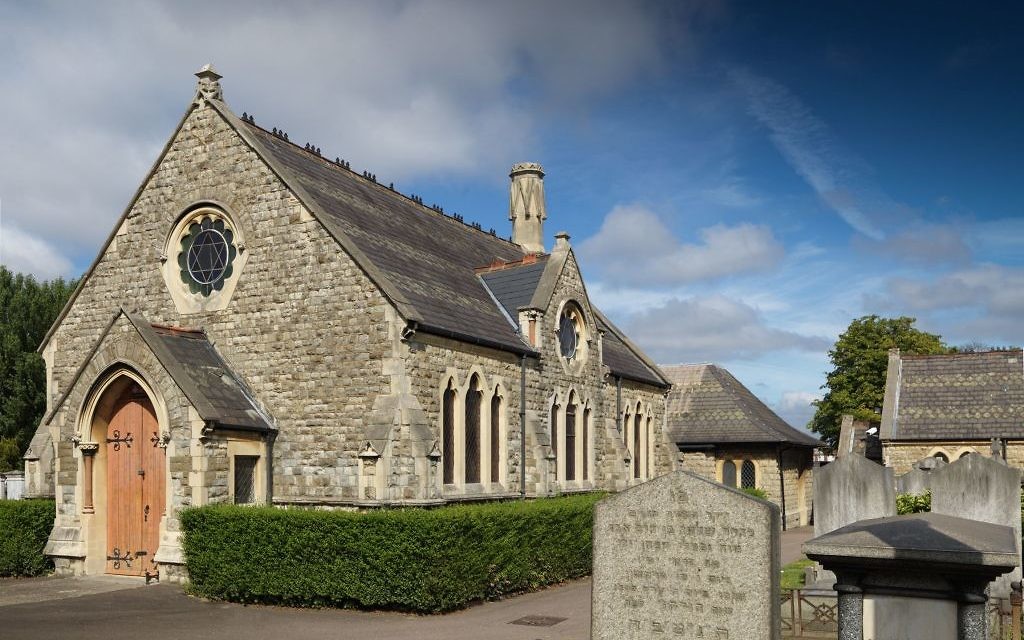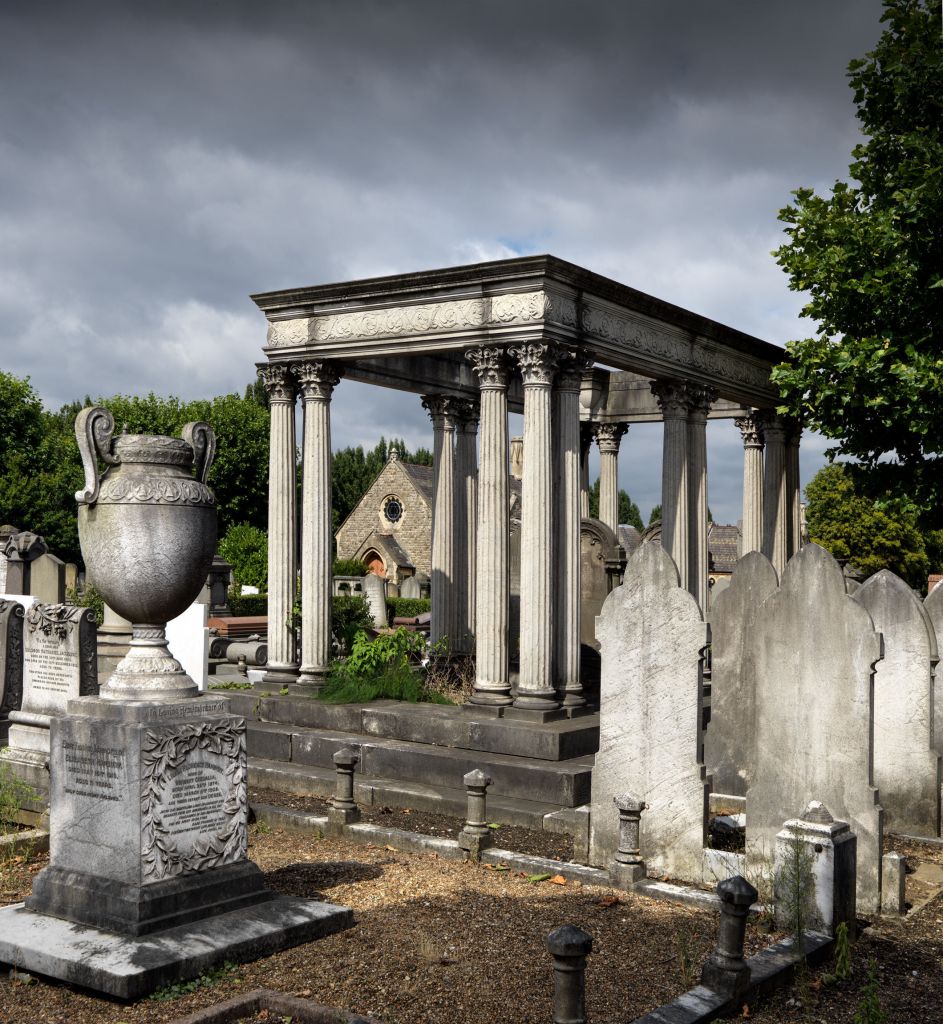New life for Willesden’s ‘house of life’
A new project led by United Synagogue hopes to transform the Grade II-listed cemetery into a heritage hotspot
Before me stands a white marble gravestone. It is small and unassuming; visitors to Willesden Cemetery could be forgiven for missing it altogether – yet it marks the resting place of a pioneering woman who changed the course of medicine.
A double helix among the usual masonry reveals the gravestone of scientist Rosalind Franklin, who helped to discover DNA.
She is just one of the many notable figures buried at the Beaconsfield Road site, which
opened in 1873 and was awarded Grade II status earlier this month.
Get The Jewish News Daily Edition by email and never miss our top stories Free Sign Up
Other notables here include Julius Vogel, the first Jewish prime minister of New Zealand; Lionel de Rothschild, one of the first Jewish members of parliament; Hannah Rosebery, once the richest woman in the world, and Jack Cohen, founder of Tesco.
The who’s who of the Jewish world buried inside Willesden’s gates mean it has become known as the Rolls-Royce of London’s United Synagogue cemeteries.
Over the course of my visit, however, I am introduced to the graves of artists, baronets, businessmen, scholars, travellers and teachers, people who founded schools and care homes, as well as many ordinary individuals who were all extraordinary in their own way.
I discover a small broken headstone dedicated to one such person – an RAF pilot officer called John Lionel de Keyser, who died at the age of just 25. I am intrigued to find out more about this unsung hero, who was reported missing in action.
A simple internet search does not reveal any further information, but help is now at hand.
A new project led by United Synagogue and funded by a National Lottery grant is hoping to transform Willesden Cemetery into a heritage hotspot and uncover more details about the people buried there.
Project development manager Hester Abrams explains: “Everybody’s stories matter and we want to uncover them all. Through telling them, we can illuminate the amazing contributions of Britain’s Jews, who made up the first significant ethnic minority to settle
here in modern times.”
Today one of the borough’s few open spaces, the cemetery has beautifully wrought Gothic pillars and headstones presenting a striking backdrop against the blue sky. It covers 21 acres, with 26,000 graves are of all shapes and sizes whose elaborate scrolls and designs catch the viewer’s eye.
“This cemetery literally charts the fortunes and development of the Jewish community in London,” Abrams continues. “Its heyday spanned the Victorian and Edwardian eras, two world wars and the post-war suburban boom from the 1940s to the 1970s.”
The heritage project hopes to interpret the graves and memorials via a website and guided tours led by trained volunteers, as well as digital tours. There are plans for open days, talks and exhibitions.
Abrams adds: “As part of the project, we want to explain and interpret Jewish burial custom and practice around death and mourning and explain some of the di erences.”
It all comes amid growing recognition of the vital part Willesden Cemetery plays in Britain’s national heritage. It boasts the first UK national Jewish war memorial and also has a unique surviving memorial to Jews who died in the Boer War of 1899 – 1902.
Abrams shows me one of the two reserved areas of Commonwealth war graves, where four simple yet striking headstones sit in a green enclosure.
Elsewhere, the grand old funerary buildings in the cemetery, which are all included in the Grade II protected status, are almost completely preserved in their original state.
They include a mortuary and prayer hall, marked with a stained-glass Star of David.
Although the site is a prominently Jewish place, Abrams emphasises the new project’s aim is for all people to connect with the heritage of the cemetery and the past it represents.
“We have had the struggles that many immigrant communities are experiencing today. We want to bring a wider range of people into the cemetery, particularly from the local community and schools,” she says.
Many of the graves we pass are well maintained, but some have inevitably crumbled over the passage of time.
Abrams mentions that the project hopes to “connect with families and encourage conservation of the graves, whether by physical repair or recording of inscriptions”.
In times gone by, Jewish burial grounds were known as the “houses of life”. Now, thanks to this project, the stories of those buried here will indeed not be forgotten.

Thank you for helping to make Jewish News the leading source of news and opinion for the UK Jewish community. Today we're asking for your invaluable help to continue putting our community first in everything we do.
For as little as £5 a month you can help sustain the vital work we do in celebrating and standing up for Jewish life in Britain.
Jewish News holds our community together and keeps us connected. Like a synagogue, it’s where people turn to feel part of something bigger. It also proudly shows the rest of Britain the vibrancy and rich culture of modern Jewish life.
You can make a quick and easy one-off or monthly contribution of £5, £10, £20 or any other sum you’re comfortable with.
100% of your donation will help us continue celebrating our community, in all its dynamic diversity...
Engaging
Being a community platform means so much more than producing a newspaper and website. One of our proudest roles is media partnering with our invaluable charities to amplify the outstanding work they do to help us all.
Celebrating
There’s no shortage of oys in the world but Jewish News takes every opportunity to celebrate the joys too, through projects like Night of Heroes, 40 Under 40 and other compelling countdowns that make the community kvell with pride.
Pioneering
In the first collaboration between media outlets from different faiths, Jewish News worked with British Muslim TV and Church Times to produce a list of young activists leading the way on interfaith understanding.
Campaigning
Royal Mail issued a stamp honouring Holocaust hero Sir Nicholas Winton after a Jewish News campaign attracted more than 100,000 backers. Jewish Newsalso produces special editions of the paper highlighting pressing issues including mental health and Holocaust remembrance.
Easy access
In an age when news is readily accessible, Jewish News provides high-quality content free online and offline, removing any financial barriers to connecting people.
Voice of our community to wider society
The Jewish News team regularly appears on TV, radio and on the pages of the national press to comment on stories about the Jewish community. Easy access to the paper on the streets of London also means Jewish News provides an invaluable window into the community for the country at large.
We hope you agree all this is worth preserving.
-
By Laurent Vaughan - Senior Associate (Bishop & Sewell Solicitors)
-
By Laurent Vaughan - Senior Associate (Bishop & Sewell Solicitors)
-
By Laurent Vaughan - Senior Associate (Bishop & Sewell Solicitors)
-
By Laurent Vaughan - Senior Associate (Bishop & Sewell Solicitors)























